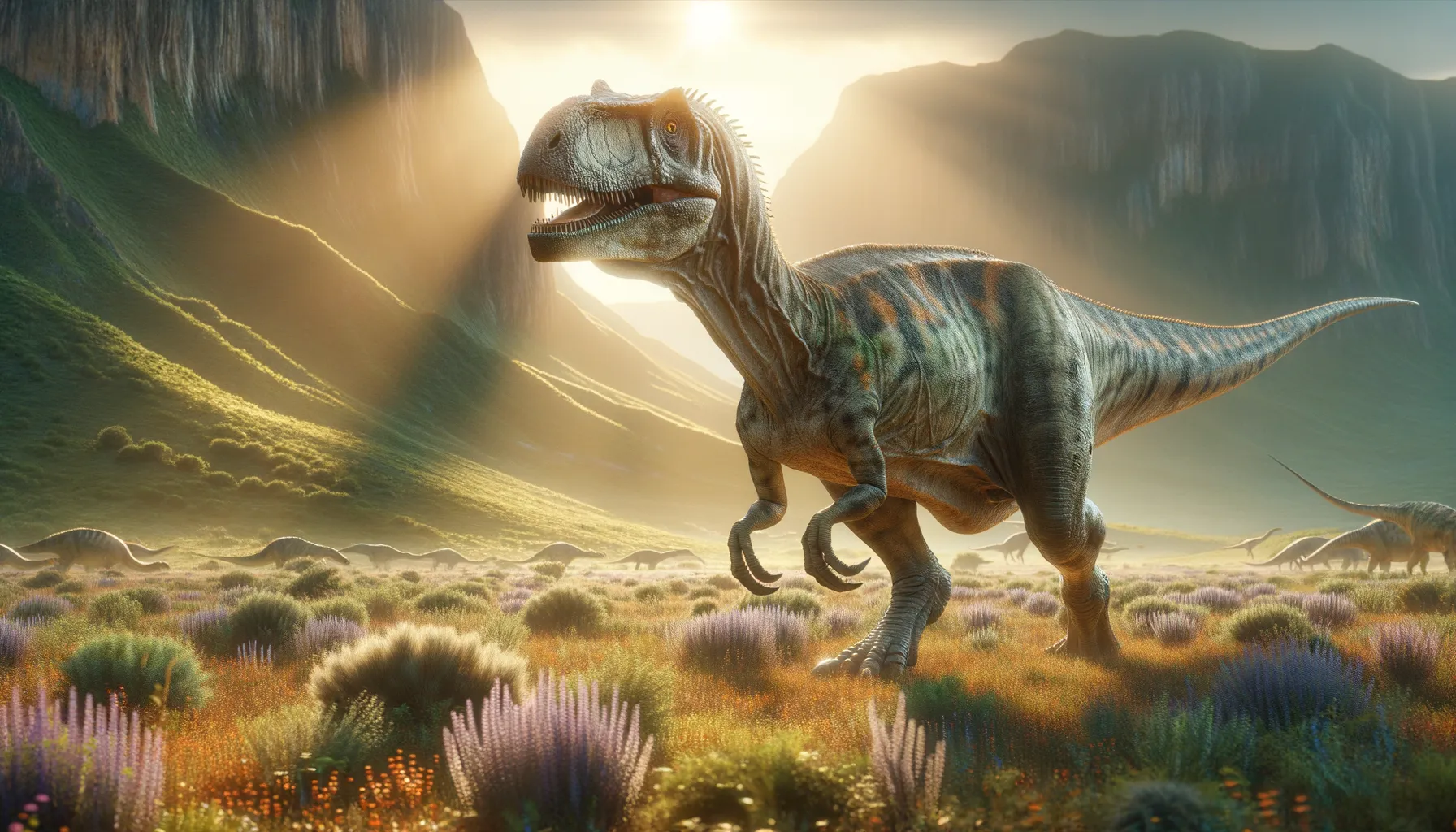
Tetragonosaurus
Grazing green and growing strong!
Period
Cretaceous
Length
About 6 meters long.
Height
Approximately 2 meters at the hip.
Weight
Around 500 kilograms.
Tetragonosaurus was a medium-sized herbivorous dinosaur known for its beak-like mouth and strong hind legs. It lived during the Cretaceous period when it roamed lush plains in search of vegetation. This dinosaur is notable for its distinct head crest and robust body, hinting at a lifestyle adapted to both grazing and evading predators. Its fossils have provided valuable insights into the diversity of dinosaur life during its era.
Diet
Tetragonosaurus primarily fed on plants. Its beak-like mouth was effective in cropping leaves and other vegetation in its environment. Occasionally, it might have consumed small fruits or seeds.
Hunting
Being herbivorous, Tetragonosaurus did not engage in hunting. Its main focus was grazing on available flora. It likely relied on group movement to avoid predators.
Environmental challenges
The Cretaceous period featured significant volcanic activity, impacting plant life. Tetragonosaurus had to adapt to fluctuations in food supply and climates. Seasonal changes also required migration to different areas for resources.
Speed
Moderate, adapted for short bursts.
Lifespan
Estimated 10-20 years.
First discovery
Discovered in Alberta in the 1920s.
Fun Facts
- Tetragonosaurus was a small dinosaur that existed during the Cretaceous period.
- It is believed to be an herbivore, meaning it primarily fed on plants.
- The name 'Tetragonosaurus' means 'four-sided lizard,' referring to possible unique features in its skeletal structure.
- Fossils of Tetragonosaurus have been found in regions that are now part of North America.
- Due to its size, Tetragonosaurus may have fallen prey to larger carnivorous dinosaurs of its time.
Growth and Development
Hatchlings were significantly smaller and relied on protective groups for survival. Growth was relatively rapid in the early years, aiding its development to adulthood. Social structures may have facilitated learning essential survival skills.
Habitat
Tetragonosaurus thrived in open plains and forested areas. These habitats offered ample food resources and shelter. Water sources like rivers and lakes were important for hydration.
Interaction with other species
Likely lived in groups, providing safety in numbers. Coexisted with predators, necessitating vigilant behavior. It may have shared its habitat with other herbivorous species, forming mixed herds.
Natural lifespan
It could naturally live up to about 20 years.
Reproduction
Eggs were laid in nests, possibly cared for by the group. Hatchlings emerged small but grew rapidly under parental or group protection. Seasonal breeding may have aligned with optimal conditions.
Social behaviour
Exhibited herd-like behavior for protection. Communication may have involved vocalizations or displays. Leadership within groups could have been dynamic, shifting with group needs.
Fossil locations
Fossils have been predominantly found in what is now Alberta, Canada. Specific digs in this region have uncovered multiple specimens. These findings have been crucial in understanding Cretaceous ecosystems.
